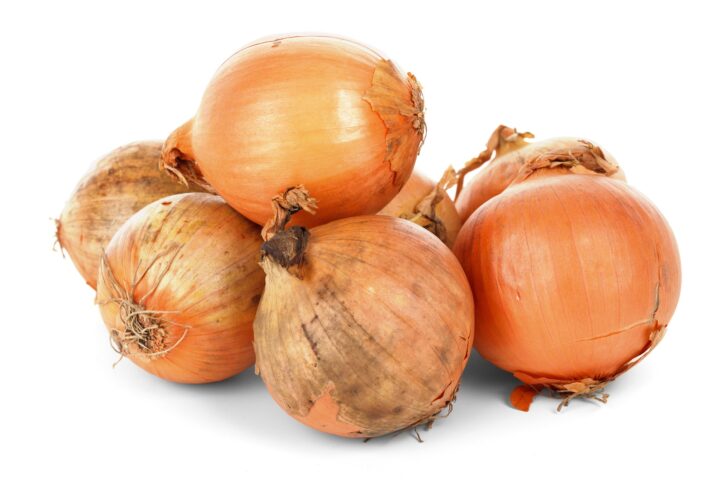Onions are a key ingredient for countless recipes. Their popularity is also partially due to the fact that several varieties of onions are available in the market.
The flavor of onions can change depending on the type of onion or the cultivar you choose. Let’s take a look at two of the most popular varieties with this sweet onion vs yellow onion comparison.
Sweet Onion VS Yellow Onion – Main Points
The Differences Between Yellow Onion And Sweet Onion
As we start the discussion, let’s take a quick look at yellow onions, sweet onions, and where these two popular varieties differ from each other.
- Popularity: Yellow onions are generally seen as the go-to onion when a recipe demands onion. They’re far more popular than options like sweet onions.
- Flavor: Yellow onions contain a relatively higher concentration of sulfur, which gives them a stronger and pungent flavor. Sweet onions have a lower amount of sulfur and lack this strong and pungent flavor.
- Taste: The more pungent flavor of yellow onions gives them a characteristic sharp taste. Sweet onions have more sugar and are not as pungent as yellow onions.
- Size: Sweet onions are generally larger than yellow onions. They’re also somewhat flatter when compared to the more curvy yellow onions.
- Shelf life: When stored correctly, onions usually stay good for weeks. Yellow onions tend to have a longer shelf life than sweet onions. The higher water content of sweet onions makes them unsuitable for prolonged storage.
While there are some differences in the shape and size of sweet and yellow onions, they are not very pronounced. For the most part, yellow onions and sweet onions are very similar in their appearance.
What Are Yellow Onions And How They’re Used
In the US, yellow onions are the most commonly available variety of onions. These are very versatile and find use in a lot of recipes. Generally speaking, if your recipe demands onions, there’s a good chance that you’re using yellow onions!
Yellow onions have a pungent taste due to the presence of sulfur. It’s a big reason why your eyes water when cutting onions! Although, part of a reason for their popularity is the fact that the pungency and astringency are nicely balanced by the presence of sugar in these onions.
When used in cooking, yellow onions are often fried or roasted with some fat. This process usually leads to the onion getting caramelized. As a result, the pungency and astringency are greatly reduced, while the sweetness comes to the fore.
Along with the change in flavor, caramelizing also causes a change in texture. The onions turn soft and become more delectable.
Caramelization makes yellow onions a fit for several recipes, including omelets and even for sandwiches and burgers.
Sauteing yellow onions is often used for some recipes and is quite similar to caramelizing onions. Sometimes, yellow onions may also be roasted as a way to reduce their pungency. This works well for several recipes where you’d want the raw crispiness of yellow onions, though without the pungency.
Recipes like French onion soup, tart, and dip make use of yellow onions. Yellow onions are often served over steak after sautéing or caramelizing.
What Are Sweet Onions And How They’re Used
There are several varieties of sweet onion, though they all share some common traits. These onions have less sulfur, which means they’re not as strongly pungent as yellow onions. Sweet onions also have a higher water and sugar content.
Due to their higher sugar and water content, these onions cannot be stored for a long time and have a limited shelf life as compared to yellow onions.
Sweet onions can be used in recipes that require onions, though they’re best employed when used raw. You can enjoy them in a salad, as a relish, or even as onion jam. They’re pretty impressive when used for onion rings!
Can You Substitute Yellow Onions With Sweet Onions For A Recipe?
It is possible to substitute yellow onions with sweet onions in a recipe, though there will be some extra steps involved. You may sometimes need to cook the onions for longer to account for the higher water content of sweet onions.
Also, remember that sweet onions don’t have the same pungency as yellow onions, which can make a noticeable difference for many recipes. Additionally, yellow onions have a crunchier texture, which presents another noticeable difference.
Conclusion
This comparison of sweet onion and yellow onion shows that though these types of onion look similar, they are fairly different in their taste, texture, and uses.
Yet, there is still a massive overlap between the two and it is possible to substitute yellow onions with sweet onions in several recipes.

